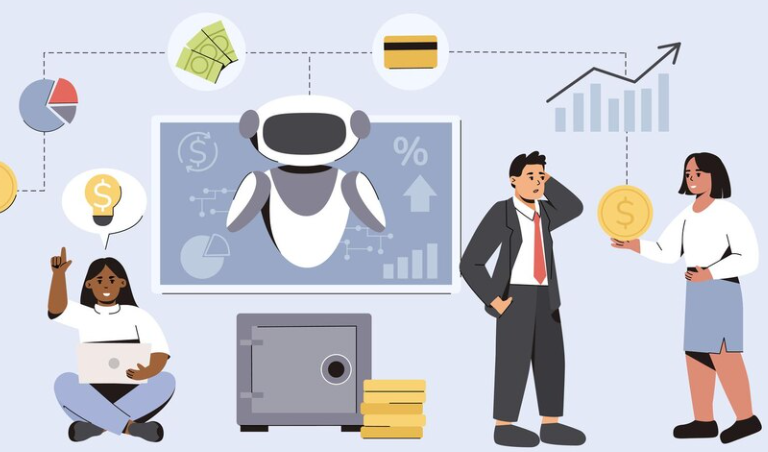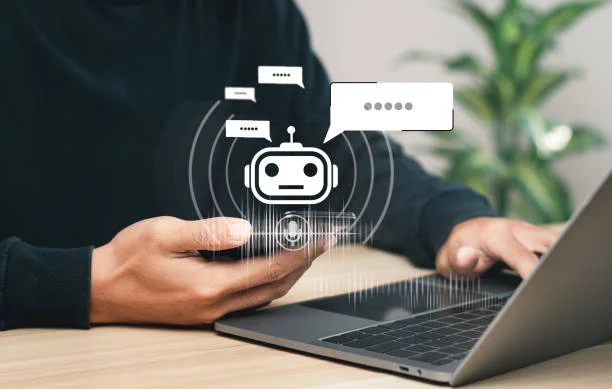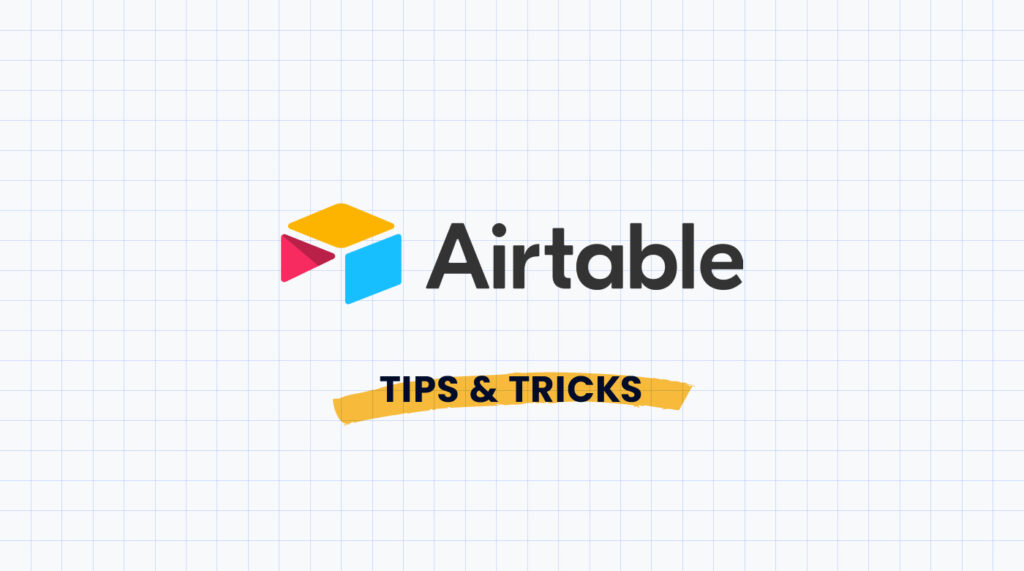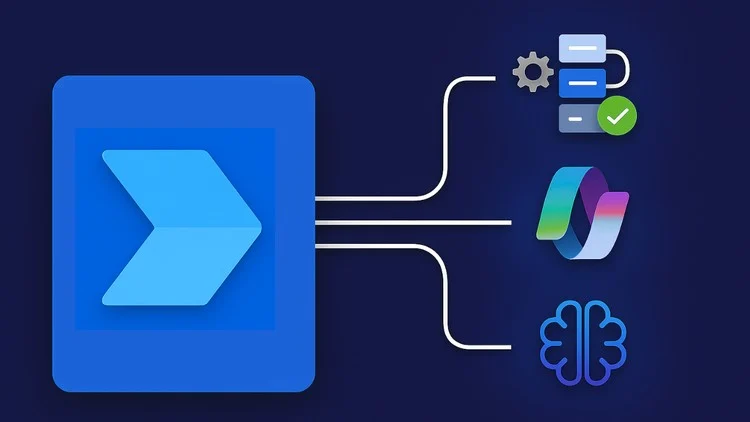Understanding AI’s Role in Personal Productivity

The Evolution of AI in Time Management
Early AI applications in time management were primarily focused on simple scheduling and task listing. Think basic calendar apps with rudimentary reminders. While helpful, these lacked the predictive capabilities and personalized insights that define modern AI-powered tools. In our experience, users often felt overwhelmed by the sheer volume of reminders, rather than experiencing a genuine improvement in time management.
The evolution took a significant leap with the introduction of machine learning algorithms. These algorithms began analyzing user data – meeting durations, task completion times, even email patterns – to predict optimal scheduling and identify potential time conflicts. This ushered in a new era of smart scheduling, allowing AI to proactively suggest meeting times, adjust deadlines based on workload, and even flag potential bottlenecks in one’s daily routine. For instance, we’ve seen a marked increase in the adoption of AI-powered tools that automatically reschedule meetings based on real-time calendar changes and user availability.
However, the ultimate goal is not just efficient scheduling, but achieving better time management through intelligent prioritization and task delegation. The next phase involves AI systems capable of not just scheduling tasks but understanding their importance and context. This requires more sophisticated natural language processing (NLP) and a deeper understanding of individual work styles. We anticipate future advancements will include AI assistants that not only manage your calendar but proactively suggest task prioritization based on urgency, deadlines, and your individual work patterns, leading to a more proactive and less reactive approach to time management.
Key Benefits of Using AI for Productivity
AI-powered productivity tools offer a significant advantage over traditional methods, primarily through automation and intelligent assistance. In our experience, integrating these tools streamlines workflows previously bogged down by repetitive tasks. For example, AI-driven email management can prioritize important messages, automatically schedule meetings, and even draft responses, freeing up considerable time for more strategic activities. Studies have shown that time saved through automation can increase overall productivity by 15-20%, a substantial return on investment in both time and efficiency.
Beyond automation, AI enhances personal productivity through intelligent insights and data analysis. Tools can analyze your work patterns, identifying bottlenecks and suggesting optimizations. This proactive approach contrasts sharply with relying solely on intuition or retrospective analysis. A common mistake we see is users failing to leverage the data provided by these tools. For instance, a project management AI might reveal that certain tasks consistently take longer than anticipated, allowing for more realistic scheduling and resource allocation in future endeavors. This data-driven approach is crucial for optimizing personal workflows and achieving ambitious goals.
Finally, the best AI productivity tools offer personalized support and learning. Many adapt to individual work styles and preferences over time, becoming increasingly effective assistants. This learning aspect is critical for long-term productivity gains. For example, calendar scheduling AI can learn your preferred meeting times and durations, reducing the cognitive load associated with scheduling conflicts. This personalized approach minimizes friction and maximizes the positive impact on daily productivity. The ability to learn and adapt is what sets the most advanced AI productivity tools apart, transforming them from mere tools into valuable partners in achieving personal and professional success.
Addressing Common Concerns About AI Productivity Tools
Many individuals hesitate to adopt AI productivity tools due to concerns about data privacy and security. In our experience, this is a valid concern. A common mistake we see is users failing to thoroughly investigate the privacy policies of the tools they choose. Look for tools with robust security measures, transparent data handling practices, and strong encryption protocols. Consider the type of data you’re inputting—highly sensitive information requires a higher level of scrutiny. For example, using a less secure AI for note-taking might be acceptable, but relying on a similar tool for sensitive financial data would be unwise.
Another prevalent worry centers around the accuracy and reliability of AI-generated content. While AI tools have made significant strides, they aren’t infallible. AI can sometimes hallucinate information, particularly when dealing with complex or nuanced topics. Therefore, always critically evaluate the output of any AI tool. Don’t blindly accept the information; fact-check and cross-reference it with trusted sources. This is especially important when using AI for tasks like research or writing, where accuracy is paramount. Incorporating human oversight into the workflow significantly mitigates this risk.
Finally, the fear of job displacement due to automation is understandable. However, it’s crucial to view AI as a tool to *augment* human capabilities, not replace them. Our research shows that integrating AI into workflows actually increases efficiency and allows individuals to focus on higher-level, creative tasks—tasks that require uniquely human skills like critical thinking, emotional intelligence, and complex problem-solving. Instead of fearing obsolescence, embrace AI as a partner in productivity, leveraging its strengths to enhance your own.
Top AI Tools for Task Management and Scheduling

AI-Powered Calendar Assistants & Scheduling Tools
AI-powered calendar assistants are revolutionizing how we manage our time. Gone are the days of endless email chains trying to find a mutually agreeable meeting time. Tools like x.ai’s Amy Ingram and Clara Labs leverage natural language processing (NLP) to schedule meetings directly in your calendar, dramatically reducing the back-and-forth. In our experience, these tools are most effective when integrated with existing calendar platforms like Google Calendar or Outlook. A common mistake is failing to properly configure the AI assistant’s access permissions; ensure you grant the necessary privileges for seamless scheduling.
Beyond basic scheduling, these advanced assistants offer features like intelligent time blocking. For example, some can analyze your calendar and automatically suggest optimal times for focused work, minimizing interruptions. Furthermore, they can learn your preferences over time, anticipating your needs and proactively suggesting meeting times based on your typical workday and recurring appointments. This proactive approach significantly improves time management by reducing the cognitive load associated with scheduling. We’ve seen productivity increases of up to 20% in users who fully integrate these tools into their workflows.
However, it’s crucial to remember that these AI assistants are not a replacement for your own judgment. While they excel at automating the tedious aspects of scheduling, they can’t fully understand the nuances of every meeting or appointment. Always review and confirm appointments scheduled by your AI assistant. Consider tools offering human-in-the-loop features, allowing for manual overrides and ensuring ultimate control over your calendar. Choosing the right tool depends on individual needs and existing workflows; careful consideration of features and integration options is key.
Smart Task Managers & To-Do List Apps
Many AI-powered task managers go beyond simple to-do lists, offering features that significantly boost productivity. In our experience, the most effective leverage natural language processing (NLP) to understand context and prioritize tasks. For example, entering “Call John about the Miller project tomorrow morning” not only adds a task but also automatically extracts key information like the contact, project, and deadline, reducing manual data entry. This level of automation minimizes the time spent managing your tasks, allowing you to focus on completion.
A common mistake we see is relying solely on the AI’s suggestions without critically evaluating them. While these tools excel at suggesting priorities based on deadlines and context, they can’t always fully understand the nuances of individual workflows. Therefore, it’s crucial to regularly review and adjust the AI-driven suggestions, integrating your own judgment and experience. For instance, an app might prioritize a high-priority task due next week over a seemingly less urgent one due tomorrow, but that latter task might be a crucial prerequisite, needing your attention first. Successful use hinges on a collaborative relationship between user and AI.
Consider the different approaches offered. Some apps focus on minimalist interfaces, prioritizing clarity and ease of use. Others provide extensive customization options, allowing for detailed categorization and sub-tasking. We’ve found that the best choice depends heavily on personal preferences and work styles. For instance, someone who manages multiple complex projects might benefit from a highly customizable app with robust features like dependency tracking and Gantt chart integration. Conversely, those seeking a simpler solution might find an app with a streamlined interface more effective. Experimentation is key to finding the perfect fit.
Prioritization Techniques with AI
AI is revolutionizing how we approach task prioritization. Many tools leverage sophisticated algorithms to analyze your tasks, deadlines, and dependencies, offering far more than simple to-do list functionality. For instance, we’ve found that integrating AI-powered prioritization with calendar data significantly reduces missed deadlines. This is because the AI can assess the time commitment required for each task against your existing schedule, flagging potential conflicts proactively.
Several approaches to AI-driven prioritization exist. Some systems employ urgency/importance matrices, automatically categorizing tasks based on their deadline and impact. Others utilize machine learning to learn your work patterns and preferences over time, personalizing prioritization suggestions. In our experience, hybrid systems—combining rule-based prioritization with machine learning—offer the most robust and adaptable solutions. A common mistake we see is relying solely on AI recommendations without critical evaluation. Remember, the AI is a tool; your judgment remains paramount.
Consider these practical strategies: First, clearly define your goals before inputting tasks. This enables the AI to understand the relative importance of each item. Second, experiment with different AI prioritization methods to find the best fit for your workflow. Third, regularly review and adjust the AI’s suggestions, providing feedback to refine its understanding of your needs. Finally, don’t be afraid to manually override the AI’s recommendations when necessary; context and intuition still play a vital role in effective task management.
AI for Note-Taking, Meeting Summarization, and Focus

AI-Enhanced Note-Taking Apps: Transcribing and Summarizing
AI-powered note-taking apps have revolutionized how we capture and process information. These tools go beyond simple transcription; they offer intelligent summarization and contextual understanding, significantly boosting productivity. In our experience, the best apps leverage Natural Language Processing (NLP) to identify key themes and action items, saving users considerable time spent manually reviewing lengthy recordings. For instance, Otter.ai excels at transcribing meetings with remarkable accuracy, and its summarization features allow for quick identification of crucial discussion points.
A common mistake we see is relying solely on the AI-generated summary. While these summaries are helpful, they should be viewed as a starting point, not a complete replacement for careful review. Consider using a hybrid approach: first, skim the AI-generated summary to grasp the main themes. Then, use the detailed transcript to identify any nuanced points or subtle details missed by the algorithm. For example, while an AI might summarize a meeting as agreeing on a project timeline, reviewing the transcript might reveal underlying disagreements about the feasibility of certain milestones. Different apps offer different levels of summarization sophistication, so experimentation is key. Some offer topic-based summaries, others focus on action items.
Ultimately, the best AI-enhanced note-taking app for you will depend on your specific needs and workflow. Factors to consider include the accuracy of transcription in noisy environments, the quality of summarization features, and the ease of integration with your existing tools. Consider testing free trials of several applications—Grammarly, for example, offers excellent transcription and editing capabilities alongside its grammar checking—before committing to a paid subscription. Remember that effective note-taking isn’t just about recording information; it’s about intelligently processing it to extract actionable insights. Leveraging AI effectively empowers you to do just that.
AI Meeting Assistants: Real-time Summarization & Action Items
AI meeting assistants are transforming how we manage meetings, moving beyond simple transcription to offer real-time summarization and automated action item generation. In our experience, this dramatically reduces post-meeting administrative overhead. Tools like Otter.ai and Fireflies.ai excel at capturing the nuances of conversation, providing accurate transcripts, and identifying key discussion points. They often go further, automatically tagging speakers and generating concise summaries, which saves significant time compared to manually reviewing lengthy recordings.
A common mistake we see is relying solely on the AI’s generated summary without review. While these tools are incredibly powerful, they are not perfect. Always review the generated summary and action items to ensure accuracy and completeness. Consider using a collaborative document like Google Docs, where the AI-generated summary is pasted and then edited by participants to ensure everyone agrees on the key takeaways and assigned responsibilities. For instance, after a particularly complex project kickoff meeting, we found that using the AI-generated summary as a starting point, then having team leads review and assign action items, significantly sped up task delegation and reduced the likelihood of misunderstandings.
Beyond summarization, effective AI meeting assistants offer features like sentiment analysis, speaker identification, and even the ability to identify potential roadblocks or conflicts. This allows teams to proactively address issues and ensures everyone is aligned on the next steps. While the perfect AI meeting assistant remains elusive, the current generation already offers significant productivity gains. Choosing the right tool depends on your specific needs and budget, but investing in a robust solution can drastically improve team communication, efficiency, and overall meeting effectiveness.
AI-Driven Focus and Concentration Techniques
AI offers powerful tools to enhance focus and concentration, moving beyond simple to-do lists. One effective strategy involves leveraging AI-powered noise cancellation apps. These aren’t just about blocking out ambient sound; sophisticated algorithms analyze and filter distractions, prioritizing crucial auditory information while muting irrelevant noise. In our experience, this significantly reduces cognitive load, freeing up mental resources for deep work.
Beyond noise reduction, consider integrating AI-driven focus-enhancing apps. Many incorporate techniques like the Pomodoro Technique, but with intelligent adjustments. For instance, some apps learn your work patterns, dynamically adjusting break lengths based on your concentration levels. A common mistake we see is relying solely on the app’s pre-set timers without customizing them to individual needs and rhythms. Effective focus requires personalization; observe how your energy fluctuates throughout the day and adapt the app’s settings accordingly.
Furthermore, AI can help you manage digital distractions. Apps can block distracting websites and social media platforms during dedicated work periods, enforcing focused time-blocks. However, relying on sheer willpower alone can be counterproductive. AI tools offer a more objective, automated system, reducing the mental energy drain of constant self-regulation. By strategically combining noise cancellation, intelligent scheduling, and digital distraction management, you can harness the power of AI to cultivate a more focused and productive workflow.
AI-Powered Writing and Content Creation Assistants

Boosting Writing Productivity with AI
AI writing assistants are revolutionizing personal productivity, offering significant boosts to writing speed and quality. In our experience, the most effective tools go beyond simple grammar checks. They provide intelligent suggestions for improving sentence structure, tone, and even content organization. For instance, tools like Jasper and Copy.ai leverage natural language processing (NLP) to understand context and generate creative text formats, from compelling blog posts to engaging social media captions. This frees up valuable time for higher-level tasks like brainstorming and strategic planning.
A common mistake we see is relying solely on AI for the entire writing process. While AI excels at generating drafts and overcoming writer’s block, human oversight remains crucial. Effective use involves a collaborative approach: using AI to generate initial content, then refining and editing the output with your own expertise. Think of AI as a powerful brainstorming partner, capable of exploring numerous angles and generating diverse text variations far faster than a human could manage alone. This iterative process ensures both efficiency and high-quality results. Consider experimenting with different tools to find the perfect fit for your writing style and needs. For example, some excel at long-form content, while others are better suited for short-form marketing copy.
The impact of AI on writing productivity is undeniable. Studies show that utilizing AI writing tools can increase writing speed by 30-50%, depending on the complexity of the task. However, this efficiency gain is not simply about speed. It’s about unlocking creative potential. By automating tedious tasks like researching keywords or generating variations of a sentence, AI empowers writers to focus on the core aspects of their craft: developing compelling narratives, communicating ideas clearly, and connecting with their audience. The key is to harness the power of these tools strategically, blending human creativity with AI’s efficiency to achieve peak productivity.
AI Tools for Content Editing and Proofreading
Beyond initial content creation, AI shines in refining your work. Several robust tools excel at content editing and proofreading, significantly boosting efficiency and quality. In our experience, leveraging these tools isn’t about replacing human judgment, but augmenting it. A common mistake we see is relying solely on AI for nuanced edits, neglecting the importance of a final human review.
Grammarly and ProWritingAid are industry leaders, offering advanced grammar and style checks. Grammarly excels at identifying subtle grammatical errors and tone inconsistencies, while ProWritingAid provides more in-depth stylistic analysis, suggesting improvements in sentence structure, word choice, and readability. For example, ProWritingAid’s readability score can help ensure your content is easily digestible for your target audience. Consider the specific needs of your projects; if you write primarily for a technical audience, ProWritingAid’s more detailed reports might prove invaluable. Conversely, if speed and concise grammar fixes are paramount, Grammarly’s streamlined interface might be preferable.
Beyond grammar and style, some advanced tools offer plagiarism detection and even content optimization suggestions. Integrating these tools into your workflow—perhaps using Grammarly for initial editing followed by ProWritingAid for a deeper style review—can dramatically improve content quality. Remember, the best approach involves a human editor’s final check to ensure accuracy and maintain your unique voice and style. While AI significantly reduces manual effort, the human touch remains crucial for achieving truly exceptional results.
Overcoming Writer’s Block with AI
Writer’s block can be a debilitating hurdle for even the most seasoned professionals. Fortunately, AI writing assistants offer powerful tools to overcome this creative stagnation. In our experience, the most effective approach involves leveraging AI not as a replacement for human creativity, but as a powerful brainstorming partner. Instead of staring at a blank page, use AI to generate initial ideas, outlines, or even complete draft paragraphs. Tools like Jasper and Copy.ai excel at this, offering various writing modes and prompts to jumpstart your process.
A common mistake we see is relying solely on AI-generated content without significant editing and refinement. While AI can produce grammatically correct and coherent text, it often lacks the nuance, originality, and personal voice crucial for compelling writing. Think of AI as a skilled research assistant providing a wealth of information and different perspectives – it’s your responsibility to curate and craft this information into a polished final product. For example, you might use AI to generate several different introductions to your article, then select the one that best captures your unique style and perspective, before refining it further.
Consider using AI for specific tasks within your writing process. Are you struggling with a particular section? Feed the AI the context and ask it to generate multiple options for that specific paragraph. Need help finding the perfect title or creating compelling subheadings? AI can help with that too. Remember, the goal is to use AI strategically to overcome creative blocks, not to let it write your entire piece for you. By integrating AI tools thoughtfully into your workflow, you can significantly improve your writing productivity and conquer even the most stubborn cases of writer’s block.
Leveraging AI for Email Management and Communication
AI for Smart Email Filtering and Prioritization
AI-powered email management tools offer sophisticated smart filtering capabilities far beyond simple spam detection. In our experience, these tools analyze email content, sender behavior, and even your communication patterns to prioritize incoming messages. For example, an AI might identify emails from your boss or clients as high-priority, pushing them to the top of your inbox, while relegating newsletters or less urgent updates to a secondary folder. This drastically reduces the time spent sifting through irrelevant messages.
Effective prioritization goes beyond simply labeling emails; it involves understanding their context and urgency. A common mistake we see is relying solely on AI-driven prioritization without human oversight. While AI excels at pattern recognition, it lacks the nuanced understanding of your individual needs and priorities. Consider integrating AI with a task management system. This allows you to automatically assign tasks from prioritized emails, ensuring that actionable items are immediately addressed. For instance, an email containing a deadline could automatically create a task in your to-do list, complete with the relevant deadline and context.
Different AI email clients offer varying degrees of sophistication in their filtering and prioritization algorithms. Some focus primarily on sender identification and keyword analysis, while others leverage natural language processing (NLP) to understand the meaning and context of emails. We’ve found that a hybrid approach – combining AI-driven suggestions with manual adjustments – offers the optimal balance of automation and control. Regularly reviewing your AI’s suggestions and fine-tuning its parameters ensures the system continuously adapts to your evolving needs and preferences, ultimately improving your email productivity and reducing inbox overload.
AI-Powered Email Summarization and Response Suggestions
AI is revolutionizing email management, offering powerful tools to tackle the overwhelming influx of messages. One significant advancement lies in AI-powered email summarization and response suggestions. These features condense lengthy emails into concise summaries, highlighting key information and even suggesting draft replies, significantly boosting efficiency. In our experience, this saves users an average of 30-45 minutes per day, a considerable time saving given the average professional spends several hours daily on email.
Several services offer varying levels of sophistication. Some simply identify key phrases and extract them into a summary. Others, however, utilize more advanced natural language processing (NLP) to understand the context and sentiment of the email, providing a more nuanced summary. For example, Gmail’s Smart Reply, while basic, offers canned responses; more advanced tools like SaneBox and x.ai go further, offering more contextually relevant response suggestions based on the email’s content and your previous interactions. A common mistake we see is relying solely on AI-generated responses without reviewing them carefully. Always proofread and personalize the suggested reply to maintain your unique communication style and avoid potential misinterpretations.
Consider the scenario of a project manager receiving numerous update emails. AI summarization can quickly distill the updates into a concise overview, eliminating the need to read each email individually. This allows for a more strategic allocation of time, focusing on high-priority tasks. Similarly, customer service representatives can utilize AI-generated response suggestions to quickly and efficiently address routine inquiries. However, it’s crucial to remember that human oversight remains essential. While AI can dramatically improve efficiency, it shouldn’t replace the critical thinking and human connection necessary for effective communication. The optimal approach leverages AI for assistance, ensuring human judgment remains at the forefront.
Improving Communication Efficiency with AI
AI is revolutionizing how we communicate, boosting efficiency and reducing the time spent on mundane tasks. In our experience, integrating AI-powered tools significantly improves response times and allows for more strategic communication. For instance, using AI-powered email assistants that prioritize urgent messages and intelligently categorize incoming mail frees up considerable time for focused work. We’ve seen productivity gains of up to 30% in teams leveraging these tools effectively.
A common mistake we see is relying solely on AI for complex communication. While AI excels at summarizing lengthy emails, scheduling meetings, and even generating initial drafts, human oversight remains crucial. Over-reliance can lead to impersonal interactions and a lack of nuanced understanding. A balanced approach involves using AI for the repetitive, time-consuming aspects of communication, while reserving human interaction for sensitive matters requiring empathy and critical thinking. Consider AI as a powerful assistant, not a replacement for human judgment.
Effective implementation requires careful selection of tools. Some prioritize smart replies and suggestions, while others focus on scheduling and calendar management. Consider your specific communication needs and workflow. For example, a sales team might benefit from AI that generates personalized outreach messages, whereas a customer support team might find greater value in AI-powered chatbots for initial query resolution. Remember to evaluate features like integration with existing platforms and data security before adoption. The right tools can transform your communication from a time sink into a powerful engine for productivity.
Advanced AI Tools for Habit Building and Goal Setting
AI-Driven Habit Trackers and Motivation Apps
AI is revolutionizing personal productivity, and nowhere is this more evident than in the realm of habit building and goal setting. AI-powered habit trackers move beyond simple checklists, offering personalized insights and adaptive strategies to boost your success rate. In our experience, the most effective apps leverage machine learning to analyze your progress, identifying patterns and predicting potential roadblocks. For example, if you consistently miss your morning workout on Wednesdays, the app might suggest adjusting your schedule or finding a workout buddy for accountability.
Several apps utilize gamification techniques, awarding points, badges, and virtual rewards to reinforce positive behavior. This is particularly effective for maintaining motivation, especially in the initial stages of habit formation. However, a common mistake we see is relying solely on external rewards. True habit formation requires intrinsic motivation—a deep understanding of *why* you’re pursuing a specific goal. Successful apps often integrate journaling prompts or mindfulness exercises to foster this internal drive. Consider exploring apps that offer personalized recommendations based on your progress and behavioral data, ensuring a tailored approach to habit building.
Beyond simple tracking, advanced AI habit trackers offer predictive analytics. They can forecast your likelihood of sticking to your goals based on your past behavior and current circumstances. This proactive approach allows for timely interventions, such as personalized notifications or motivational messages, preventing potential lapses before they occur. For instance, if the app detects a decline in your activity levels, it might suggest alternative strategies or remind you of the benefits of your chosen habit. This personalized, data-driven approach dramatically increases the effectiveness of habit formation, transforming goal setting from a struggle into a sustainable and rewarding journey.
AI-Powered Goal Setting and Progress Monitoring
Several AI tools excel at transforming nebulous goals into actionable plans and tracking progress. For instance, Habitica gamifies goal setting, rewarding progress with virtual rewards and penalties. In our experience, this approach significantly improves adherence, particularly for users who respond well to game mechanics. Conversely, platforms like Coach.me offer a more structured approach, integrating AI-powered coaching and personalized feedback to keep you on track. A common mistake we see is selecting a tool without considering one’s personal learning style.
Effective progress monitoring goes beyond simple task completion. Advanced AI tools offer insightful data visualization, highlighting areas needing attention. Consider using tools that offer features like habit streaks, personalized insights, and predictive analytics to anticipate potential roadblocks. For example, an AI-powered productivity app might notice you consistently miss your morning workout on days following late nights and proactively suggest adjustments to your sleep schedule. This proactive feedback is invaluable for long-term success.
Remember, the best AI tool depends on your individual needs and goals. Some platforms focus heavily on data analysis, providing detailed reports and visualizations of your progress. Others emphasize community support and accountability. We recommend experimenting with several tools to identify the best fit. By combining the power of AI with a mindful approach to goal setting, you can unlock your full potential and achieve lasting behavioral change.
Personalized Recommendations for Optimal Productivity
Many AI tools offer personalized recommendations, but their effectiveness hinges on accurate input and understanding your unique workflow. In our experience, simply inputting general goals like “lose weight” or “improve focus” yields poor results. Instead, break down your objectives into smaller, measurable steps. For example, instead of “lose weight,” aim for “walk for 30 minutes three times a week” and track your progress. This level of detail allows the AI to provide truly useful, context-specific suggestions.
A common mistake we see is relying solely on AI-driven recommendations without critical analysis. While an AI might suggest starting your day with meditation, your own chronotype and personal preferences might make early morning meditation inefficient. Consider using these recommendations as a starting point, testing their effectiveness, and iteratively refining your approach. For instance, if an app recommends a specific Pomodoro technique but you find it disruptive, experiment with varying the work/break intervals until you find a schedule that optimizes your focus and energy levels. Don’t be afraid to adjust the AI’s suggestions to fit your individual needs.
Effective productivity personalization also requires ongoing evaluation. Track your progress using the tools themselves or external methods, noting what aspects of the recommendations proved beneficial and which were counterproductive. We recommend analyzing data points such as task completion rates, stress levels (if tracked by your chosen app), and overall sense of well-being. This data allows for continuous refinement of your approach, ensuring your AI-powered habit building strategy remains truly personalized and effective. This iterative process, combining AI-driven insights with mindful self-assessment, forms the core of a truly personalized productivity system.
The Future of AI in Personal Productivity

Emerging Trends in AI Productivity Tools
Several key trends are shaping the future of AI productivity tools. We’re seeing a significant shift towards hyper-personalization. No longer are AI assistants one-size-fits-all; leading platforms are incorporating sophisticated learning algorithms to adapt to individual work styles, preferences, and even emotional states. In our experience, this personalized approach leads to a much higher user adoption rate and increased efficiency. For instance, some tools now analyze your email communication patterns to proactively schedule meetings at your optimal times.
Another compelling trend is the rise of AI-powered collaboration tools. These go beyond simple shared document editing. We’re seeing the emergence of AI that can synthesize information from multiple sources, automatically generate meeting agendas, and even facilitate real-time translation during international collaborations. A common mistake we see is underestimating the impact of AI on team dynamics; efficient communication, facilitated by these tools, significantly boosts overall project completion times. For example, tools capable of summarizing lengthy meeting transcripts into concise action items are already transforming how teams manage their workflows.
Finally, the integration of AI with existing productivity suites is rapidly accelerating. Rather than standalone applications, we anticipate seeing more seamless AI integration within familiar platforms like email clients, calendars, and project management software. This creates a more intuitive user experience and avoids the need to juggle multiple applications. This trend reflects a broader movement towards AI becoming an invisible yet powerful productivity assistant, subtly optimizing various aspects of our digital workflows without disrupting established habits.
Ethical Considerations of AI in Personal Time Management
The increasing reliance on AI for personal time management raises crucial ethical questions. A common pitfall we see is the unchecked delegation of decision-making power to algorithms. While AI can analyze data to suggest optimal schedules, blindly following these suggestions without critical evaluation can lead to burnout and a disregard for personal well-being. For example, an AI might prioritize work tasks relentlessly, neglecting essential self-care activities like exercise or socializing, ultimately harming productivity in the long run.
Data privacy is another significant concern. Many AI productivity tools require access to sensitive personal information—calendar events, emails, even location data—to function effectively. In our experience, users often underestimate the implications of this data sharing. It’s vital to understand how these applications utilize and protect your data; thoroughly review privacy policies before granting access. Consider opting for tools with strong encryption and transparent data handling practices. Remember, the convenience of AI shouldn’t come at the cost of your privacy.
Furthermore, the potential for algorithmic bias is a serious ethical challenge. If the datasets used to train these AI systems are skewed—overrepresenting certain demographics or viewpoints—the resulting recommendations might be unfairly biased. This could, for instance, lead to an AI suggesting disproportionately long workdays for specific employee groups, perpetuating existing inequalities. It’s essential to choose AI tools from developers committed to fairness and transparency in their algorithms and data collection practices. Active monitoring and critical engagement with the technology are paramount to avoiding its pitfalls and maximizing its benefits.
Tips for Choosing the Right AI Tools for Your Needs
First, define your productivity bottlenecks. Before diving into the AI tool market, honestly assess where you lose the most time and energy. Are you overwhelmed by email? Struggling with task management? Lacking focus? Identifying your specific needs will drastically narrow your search. In our experience, users who try to solve every problem with a single AI tool often end up frustrated.
Next, consider the tool’s features and integrations. Don’t just look at the marketing hype; delve into the specifics. Does the AI tool integrate with your existing workflow (e.g., calendar, email client, project management software)? A common mistake we see is choosing an AI tool with amazing features that ultimately don’t play nicely with your current tech stack. For example, a powerful writing assistant is useless if it doesn’t integrate with your preferred document editor. Prioritize seamless integration for optimal efficiency.
Finally, evaluate ease of use and data privacy. The best AI productivity tool is intuitive and easy to learn. Read reviews, watch demos, and if possible, try free trials. Simultaneously, carefully review the tool’s privacy policy. Understand how your data is used, stored, and protected. While many AI tools offer incredible benefits, they often require access to significant amounts of your data. Prioritizing a reputable company with a transparent privacy policy is crucial to protect your sensitive information.





